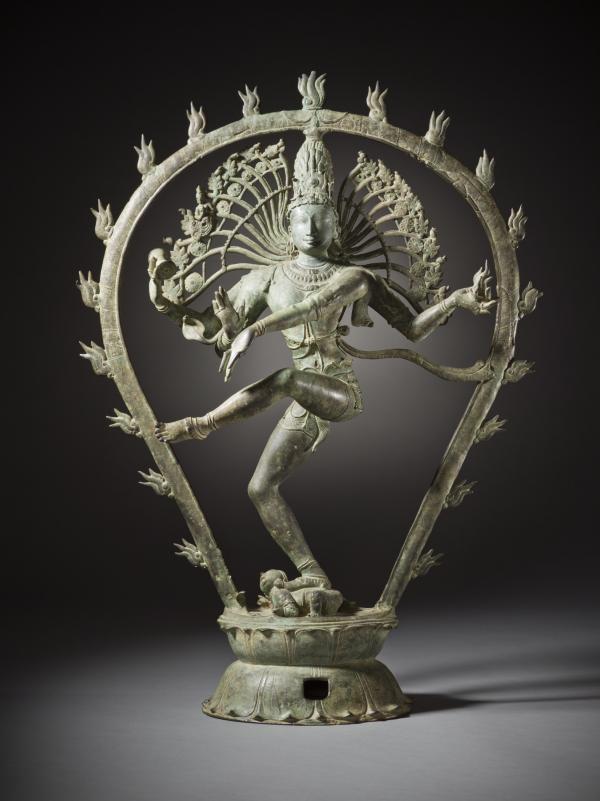Shiva, depicted in this copper-alloy sculpture, was especially popular and widely worshipped throughout southern India. Along with Brahma the Creator and Vishnu the Preserver, Shiva the Destroyer and Restorer makes up the triad of Hindu gods. He also serves as the patron god of yoga, recognized as the source of the cosmic dance that created the universe in endless rhythmic cycles.
In this work, Shiva dances in an aureole of flame that rises from a lotus pedestal, a symbol of primordial being and creation. The arched aureole and its three-tongued flames represent the universe and its ultimate destruction by fire. In his upper right hand Shiva holds the drum representing the primordial sound at the creation of the universe; the second right hand makes a gesture of reassurance. His upper left hand holds the flame of destruction. The lower one points to his left foot, refuge of the soul, and shows the path of salvation through Shiva's trampling of the demon that personifies ignorance. Shiva's body seems to rise and expand with his aureole. The force of his broad shoulders and proud countenance are echoed by the rhythmic explosion of his locks; among them the small figure of Ganges (left) represents the god's intimate connections with water, the force of life. Perfectly poised, this work manifests Shiva's divine unity with compelling grace and majesty.
The Tamil sculptors of the Chola dynasty (mid-ninth to early 14th centuries) realized Shiva the Dancer in his most complete and graphic form (Nataraja), one which has become symbolic of Indian civilization.
Shiva as the Lord of Dance is currently on view on the fourth floor of the Ahmanson Building. Check out LACMA's Collections Online and download a high-resolution image.
This year marks LACMA's 50th anniversary. We're celebrating all that we've done while looking forward to what's in store for us in the next 50. Check back every week on Unframed to find a highlight of an artwork from LACMA's collection, which features over 120,000 objects that span time, the globe, and all cultures. This is 7/50 of the series. This text comes from LACMA's Collections Online page.



